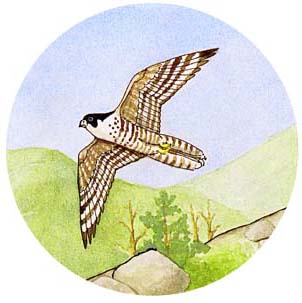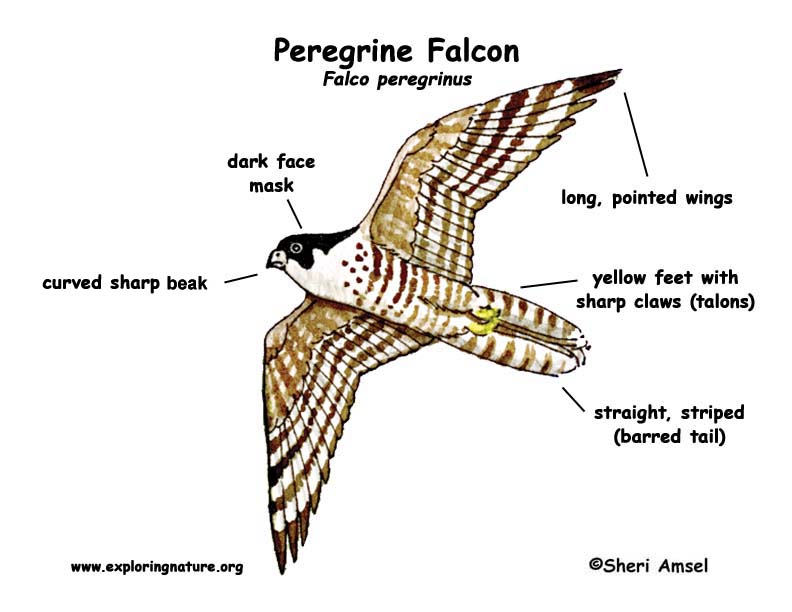

Peregrines are found all over the world. In the western hemisphere, they spend the winter on the coast of Alaska, south along both coastlines of the U. S. down through the southwest U.S., through Mexico and South America.
They can be found over meadows, mudflats, beaches, marshes, and lakes whereever there are birds they can hunt. Sometimes they are found in cities hunting pigeons.
They are 16 - 19 inches long with a wingspan of 3 - 5 feet. They have long, pointed wings that are black to blue-ish gray. They have a dark face-mask with a light neck, chest and belly. They have yellow feet and both their leg and tail feathers are striped (barred).
When diving after birds, they are the fastest animal on earth. They strike their prey from above, killing it instantly. They live up to 17 years in the wild.
They eat birds, including blackbirds, jays, swifts, doves, shorebirds, and songbirds. They also will eat bats and small mammals.
They nest on cliff ledges and in cities on tall buildings. They lay 2-5 reddish-brown eggs with dark spots.
Kingdom: Animalia
Phylum: Chordata
Subphylum: Vetebrata
Class: Aves
Order: Falconiformes
Family: Falconidae
Genus: Falco
Species: F. peregrines
When you research information you must cite the reference. Citing for websites is different from citing from books, magazines and periodicals. The style of citing shown here is from the MLA Style Citations (Modern Language Association).
When citing a WEBSITE the general format is as follows.
Author Last Name, First Name(s). "Title: Subtitle of Part of Web Page, if appropriate." Title: Subtitle: Section of Page if appropriate. Sponsoring/Publishing Agency, If Given. Additional significant descriptive information. Date of Electronic Publication or other Date, such as Last Updated. Day Month Year of access < URL >.
Amsel, Sheri. "Falcon (Peregrine)" Exploring Nature Educational Resource ©2005-2024. December 15, 2024
< http://www.exploringnature.org/db/view/192 >

